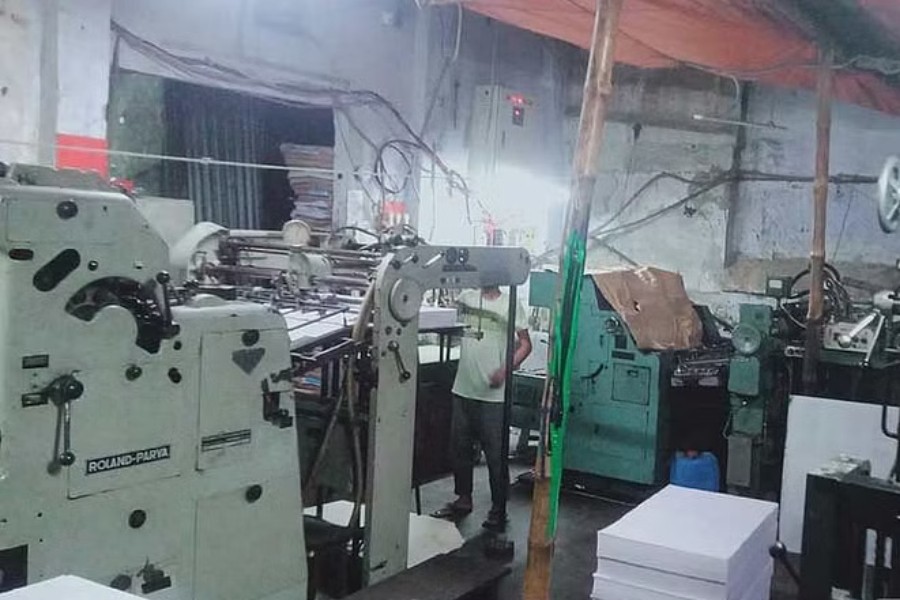
Published :
Updated :

December is the month when a flurry of distribution of leaflets, pamphlets, brochures and even booklets takes place all around. For years, the sponsors have taken an easy way out: they insert their advertisement materials into newspapers. Thus the newspapers bring into subscribers' homes a whole range of promotional ads. Sure enough, at the top of the list of unsolicited ad materials are those of coaching centres, publishing houses of guides and notebooks, kindergartens, schools, colleges and even universities. Then there is an array of such materials from fast food outlets, restaurants, health facilities, housing companies, home service entities and others.
Whether the newspaper hawkers agree to run such sponsors' errand free of cost or are offered a charge for the indirect service is not known. The hawkers do not have to give an extra effort unless they are asked to accommodate such glossy and colourful ad materials within newspaper pages. If meticulously arranged in each separate newspaper, it takes quite a time. In that case, hawkers are unlikely to do their bidding without a charge.
Well, this is also the time for reaching complementary calendars to patrons, customers and other target population. Sagging business has had an adverse impact on the quality of calendars and their distribution. But this is just one-off business promotion, albeit very strong, limited to a select band of customers and patrons.
Where printing and publication sector draws its sustenance from lies in books---all kinds of books. With the introduction of the new national education curriculum based on class-centric teaching and evaluation, the coaching centres and note and guide-book publishers have been projecting a low profile this year.
They may be in a 'wait-and-see' zone. This certainly has had a positive impact on supply of newsprint and printing paper. It is the time of the last-minute printing of textbooks. As many as 40.9 million students are supposed to receive 350 million copies of textbooks. Again, the country is preparing for the Ekushey book fair.
Naturally, at a time of soaring prices of newsprint and paper, supply of this primary printing substance is still under severe stress. The prices of newsprint and paper almost doubled between Fiscal Year (FY) 2018-19 and FY 2021-22. It is against this backdrop, there have been repeated appeals from the Newspaper Owners' Association of Bangladesh (NOAB) and others involved with the publication industry to reduce the rate of import tariff from newsprint and paper. The demand is quite logical when the private paper mills are hiking price with no restraint.
Sadly, the printing and publication industry that was growing before the pre-pandemic time reportedly at a healthy rate of 15-18 per cent a year took a body blow during the corona period. However, the thriving business of note and guide books that has stymied on the eve of the introduction of the new curriculum has eased off some pressure. The industry's annual turnover is Tk120 billion. During the pandemic the loss was approximately Tk40 billion a year. However, the government came up with a stimulus package of Tk 200 billion to the industry.
Now that the note and guide-book business finds itself at a crossroads, academic books, fictions and other non-fiction books can make the most of the situation provided the printing materials are rendered less costly with policy support. In that case, the greatest challenge comes from electronic gadgets that keep the young generations and some of the older generations as well glued to the screens of devices.
In that case, the best option for is multi-dimensional use of contents and characters of books. Particularly for children, this is likely to be a sure success if books are used as primary source of contents and then adapted to forms of video, comics, animation and even games and cartoons. Once children become familiar with the characters ---heroes and heroines and even comical characters or jokers (if any), not to mention villains ---they may develop interest in reading the original books on which those materials were based.
If reviving the reading habit may not be easy, even such round-about familiarity is not worse either---at least better than the addiction to smartphone and computer's salacious contents.
nilratanhalder2000@yahoo.com


 For all latest news, follow The Financial Express Google News channel.
For all latest news, follow The Financial Express Google News channel.